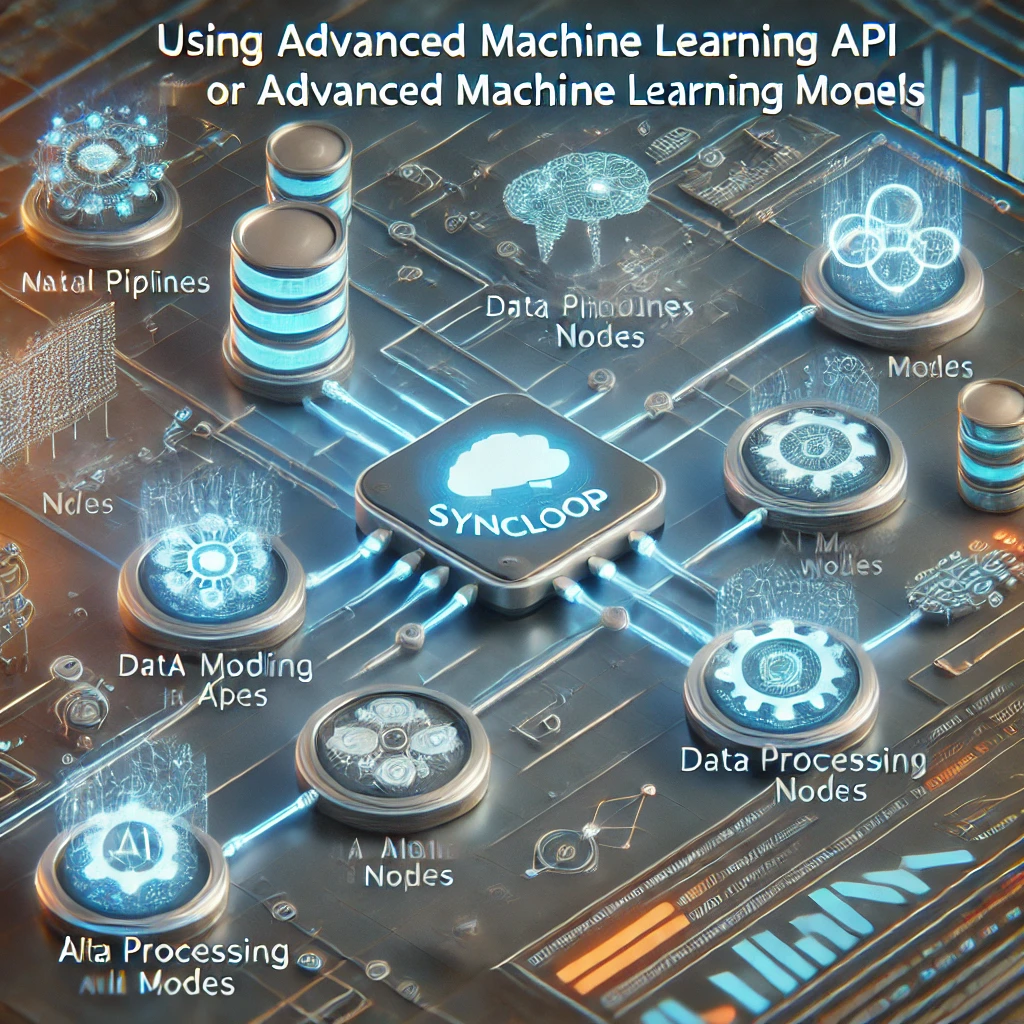Using Syncloop to Design APIs for Advanced Machine Learning Models

Importance of APIs for Machine Learning Models
APIs play a crucial role in operationalizing ML models by:
- Enabling Scalability: Allowing ML models to serve predictions to multiple applications and users.
- Simplifying Integration: Bridging the gap between complex ML logic and user-friendly applications.
- Real-Time Processing: Supporting instant decision-making and dynamic model interactions.
- Securing Access: Protecting sensitive data and models with authentication and role-based controls.
Syncloop empowers developers to address these requirements seamlessly with its comprehensive API development platform.
Key Features of Syncloop for ML Model APIs
1. Dynamic Workflow Automation
Automate ML workflows such as data preprocessing, model inference, and response generation using Syncloop’s visual workflow designer.
2. Real-Time Processing
Leverage Syncloop’s scalable infrastructure to process predictions in real time, enabling fast and accurate responses.
3. Data Transformation
Transform incoming data to match model requirements and format responses for end-user applications with Syncloop’s Transformers.
4. Error Handling
Implement retry mechanisms and fallback workflows to manage API errors gracefully and ensure reliability.
5. Monitoring and Analytics
Track API performance, usage patterns, and error rates in real time to optimize workflows and monitor model effectiveness.
6. Secure Access Controls
Protect model APIs with token-based authentication, encryption, and role-based access control.
Steps to Design ML Model APIs with Syncloop
Step 1: Define API Requirements
Identify the functionalities required for the API, such as:
- Data preprocessing.
- Model inference.
- Post-processing and response generation.
- Integration with downstream systems.
Step 2: Configure Endpoints
Set up Syncloop API endpoints to expose ML functionalities. For example:
- /predict for serving model predictions.
- /train for retraining the model with new data.
- /monitor for checking model health and performance.
Step 3: Automate Data Processing Workflows
- Use Transformers to clean and preprocess incoming data, such as:
- Normalizing numerical inputs.
- Encoding categorical variables.
- Reshaping data for model compatibility.
- Implement workflows to route data to the ML model and process responses.
Step 4: Handle Asynchronous Operations
Use Await to manage long-running ML tasks, such as:
- Batch inference.
- Model training or fine-tuning.
Step 5: Monitor API Performance
- Track metrics like latency, throughput, and error rates using Syncloop’s real-time monitoring tools.
- Use analytics to identify performance bottlenecks and optimize workflows.
Step 6: Implement Security Measures
- Secure API endpoints with token-based authentication.
- Encrypt data transmissions to protect sensitive information.
- Apply role-based access to restrict operations like model training or updates to authorized users.
Real-World Applications
1. E-Commerce
- Use Case: Enable personalized product recommendations with real-time prediction APIs.
- Features Used: Dynamic workflows, data transformation, monitoring tools.
2. Healthcare
- Use Case: Provide diagnostics and treatment suggestions with ML-powered inference APIs.
- Features Used: Secure access controls, real-time processing, error recovery.
3. Finance
- Use Case: Detect fraud and assess creditworthiness using predictive APIs.
- Features Used: Role-based access, asynchronous processing, scalable infrastructure.
4. IoT
- Use Case: Analyze sensor data with real-time ML models for anomaly detection and predictive maintenance.
- Features Used: Event-driven workflows, data preprocessing, monitoring tools.
Best Practices for ML Model APIs
- Optimize Workflows: Minimize latency by streamlining data preprocessing and inference steps.
- Monitor Continuously: Use Syncloop’s real-time monitoring to track API usage and performance.
- Secure Sensitive Data: Protect model inputs, outputs, and parameters with encryption and authentication.
- Plan for Scalability: Design APIs to handle increasing traffic and diverse use cases.
- Document APIs: Maintain clear documentation to facilitate integration and usage.
Why Choose Syncloop for ML Model APIs?
Syncloop offers an intuitive platform for designing and managing APIs that integrate advanced ML models. Its automation tools, scalable infrastructure, and security features ensure that your APIs are reliable, efficient, and easy to maintain.
Conclusion
Building APIs for advanced ML models requires tools that simplify workflows, enhance scalability, and ensure security. Syncloop provides a comprehensive solution for managing these challenges, enabling developers to deliver intelligent APIs that power cutting-edge applications. Whether for e-commerce, healthcare, or IoT, Syncloop equips you to harness the full potential of machine learning.
Back to Blogs